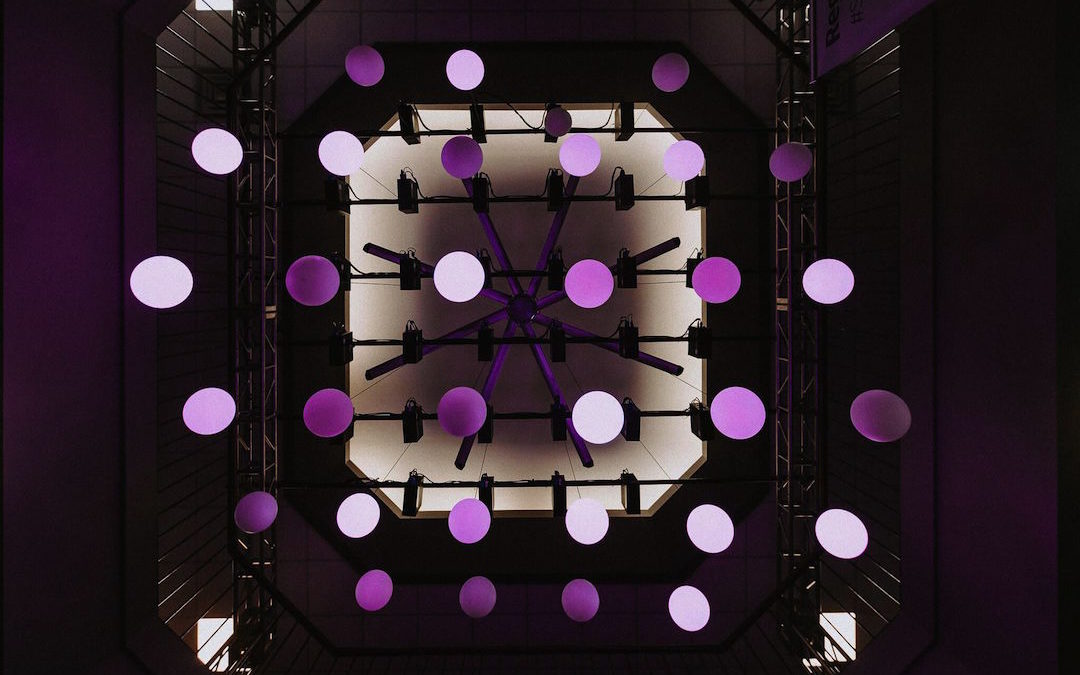Hello, and welcome to Mod Scenes podcast. The podcast about incredible stage backdrops and making stage designs for your church. So, um, my name is Steven. I am the host of this incredible podcast, and I want to thank you for checking us out and, uh, for helping us to become, uh, for those of you who are clients helping us to become the highest rated stage design company in
North America. Woo. Israel,
Exciting, really awesome. We are really grateful. So thank you for allowing us to serve you and for sharing with others, how we have certainty. So thank you so much for that. Um, so today we’re going to chat a little bit about, uh, stage backdrops and specifically about fabrics because, uh, any good stage backdrops, um, is at some point going to have some sort of fabric tied into it. So I just want to kind of do a quick overview is podcasts probably won’t be super long, but I want to do a quick overview of some fabric options and how they might best suit you and your specific needs, uh, while working with either our products or in conjunction with other products, um, just in general, how it might be beneficial to you. Um, yeah, so, uh, so let’s jump right into this. So, uh, there are lots of different fabric companies that make fabric that do custom selling.
They do pipe and drape. They do, uh, even straw material. Um, let’s name a few. So we’ll a few of them are going to be rose brand. So rose brand is at theatrical, uh, current manufacturer. Uh, they are also a distributor for a lot of other really, uh, really cool, uh, theatrically based products. Um, they also carry a DMX winch, uh, the winch tens by Walberg. Uh, so they’re, uh, we actually, they’re similar to, uh, in some aspects are similar to our TMX winches, our DMX voice. Uh, but honestly I think ours are better. Um, they operate in the same in a very similar principle. Um, ours are designed to carry the led luminaires, whereas theirs are designed to carry like random, weird stuff, like say you need to move a need to move a foam pot up in a theatrical setting. They can do that, stuff like that.
Um, so, uh, anyhow, they are a, uh, as I mentioned, they’re a theatrical fabric, uh, manufacturer. They, uh, they’re one of the biggest, uh, and they do a really, really good job on making and sewing theatrical drapes. Uh, I’ve used them on a lot of projects and they’re really great. Uh, another one is Daisy. Daisy is another great company that, uh, that does sewing and custom fabrics. And both of them also do like sell by the roles of you’re looking for just a fabric. You can just buy the roll of it. You don’t have to have it pre-sold, uh, but Daisy and does a great job with, uh, creating backdrops as well. Uh, when, you know, like fabric backdrops, um, let’s see, who else? Uh, quest events out of Dallas, uh, well, out of all over the place, but their main offices in Dallas, uh, they do pipe and drape rentals.
So they, they do, uh, I believe they do some of their own drape in house. I don’t know the, all the details on that, but they, uh, uh, they definitely provide Drake for a lot of events, uh, specialty rentals. Uh, so what ink is another one? I don’t know if it’s somebody or just, so what, uh, they’ve made some pretty cool stuff, so kabuki’s and other things for us at that point. Uh, they did some pipe and drape for, uh, north Northland when I worked over there. Um, so there another, uh, reputable, uh, stage backdrops manufacturing company. Uh, let’s see who else? Uh, there’s a couple others, uh, uh, Grosh, uh, Georgia scenic. Um, there’s a few others that I’m, I, I can’t the there’s, there’s one that I’m missing. That’s not coming to the top of my mind, so I apologize about that, but there definitely is at least one other there’s really big and my mind is like going blank on. So sorry about that. Um, anyhow, all of them have, uh, some things that are very similar. So, um, so we’re going to kind of talk in a little bit of generalization,
Um, based on, uh,
Based on, uh, typical products that could be used and should be good or should be used or not used, um, in creating like a blackout drape, um, specifically. So blackout drape is what we’re specifically talking about since a lot of that is going to be, um, the world we’re working in since we’re working with modular panels in front of it. So, um, so the cheapest, um, the cheapest option is called banjo drape. So this is a really thin drape. Uh, it does probably blocks out, you know, 50% of what you can see through the drape. Um, but this is typically used in trade shows. Uh, it’s not very, uh, it’s very lightweight. It’s, doesn’t look very nice. It’s kind of shiny, um, the way that it’s sewn, like I think it uses less material, but it just doesn’t look as good. Uh, most of the, most of it’s made fire rated most of it, but not all of it. Uh, it depends on the manufacturer, so I would check with them, but most of it is made fire rated. Uh, part of the reason that it’s used in trade shows is because in trade shows typically, um, typically you’re wanting to have as little weight as possible, have it set up as quickly as possible, and if anybody really cares, they’re gonna bring their own
Drape. That’s really what it comes down to.
Uh, so, um, which we do every time we do a trade show, it’s kind of funny. They’re like, there’s probably a drape here on, yeah, it looks ugly. Uh, um, so that’s, uh, that’s the cheapest option is banjo. So that’ll, that’ll block out your, your space, but it’s not a very high quality fabric. It looks cheap, honestly. Um, so, uh, the next, uh, probably the next rung is like a, uh, uh, a polyester, like a premiere polyester drape. So this is going to be, um, every company is going to name this one different. So, uh, it’s essentially a 80% blackout drape. Uh, it looks similar to like a tablecloth. So the type of material, like a, like a reasonably good tablecloth is made out of, it’s a very similar material to that. Um, so it’s, uh, it’s a material. It looks fine. I wouldn’t say that.
It looks amazing, but it doesn’t look bad either. Uh, so that’s, uh, it’s kind of a run of the mill material, but it does do a good job blocking stuff out. And it’s typically what we use because it has a good balance of look and the weight. So it doesn’t weigh very much. Um, and you can pack a lot of it into a case. I think you can pack probably four, 12 foot sections into a pallet and 15, 10. So that’s quite a bit, um, whereas bandage, you’d probably put it at six and Valora, you could probably get one. So, um, so it’s a good, it’s a good balance of, you know, weight and cost reduction and, uh, overall look. So the polyester is typically, uh, premier poly is what, uh, what we call ours, but there, like I said, there’s a lot of different options for, for that from different vendors.
Um, let’s see, uh, then there’s commando cloth. So commando cloth is, uh, it’s very similar to a Duberstein. So do routine as a do routine is a terrible, uh huh. That’s really funny. I said terrible, but I meant terrible. Uh, it is a fabric that is sown. That is a cheap fabric. Uh, so it’s a lot of people use it for like, if they’re trying to, uh, cover cases or stuff like that, like kind of simple stuff that just needs to be blacked out. Uh, so do routine, uh, do routine and command of cloth are slightly different, but they serve the same purpose. They’re a budget friendly black drape that, uh, it’s got a similar weight to like it’s probably half the way to Valore and it’s a little bit heavier than a poly, like a premiere poly or something like that. Uh, so it’s a little bit heavier, uh, but it does rip easier than like a, like a polyester type drape, uh, but it’s less reflective. Call today for your stage backdrops!
So, uh, if you want something that kind of disappears a little bit more, that’s a good option. I think the premiere Polly’s a better, because although it does reflect a little bit more light, it’s more durable, uh, at least in my experience. Um, so do routine is very similar to that, uh, to that as well to the, um, devotees and command a cloth. They’re both that it’s a very similar material. The manual cloth is a little bit higher quality. Uh, it’s got a little bit better texture, so it’s not quite like a lure where you can like feel it, like, it feels like it’s a nice texture, but it is like, it is presentable. You can do like a beige or a tan and it still look really nice on a, like a, like a 14 or 16 ounce, uh, probably 16 ounce, uh, uh, commando, cloth.
It looks pretty good. Uh, and then the next one, uh, the next kind of big sub-grouping would be a, um, uh, would be Avalor. So have a, Laura is a heavy drape, it’s a thick drape. Uh, it’s great for sound deadening. It’s uh, whenever you see like big, heavy drapes, like you see like drapes at a big theater, that’s a type of drapes we’re talking about. So they’re heavier drapes. They’re really, uh, uh, really durable. They, uh, dead and sound quite a bit. They take light really well because they have, uh, this texture on them. Uh, I don’t know how to best describe it, but it’s kind of like a fuzz. Like it, it’s a really, uh, it’s a really actually great, it’s really great at catching line. So, but it is a heavy, um, it’s about three or four. It’s probably five times as heavy as a, like a poly polyester drape. Call today for your stage backdrops!
Um, it, um, it’s heavy and it’s a big thing. Uh, it’s large, so it’s a lot harder to ship, uh, especially if you’re doing it over and over again. Um, and it’s, uh, but you do get the added benefit of how durable it is. So, um, as with anything there’s trade offs and benefits, um, but with any of these drapes, um, you can make the drape look a lot better by simply adding some monsoons on top. So if you have crappy drape, you throw out some Mon Scenes on top. Uh, the contrast is going to make it look really good. So, um, I hope this is a helpful, I kind of insight into some drape and at least a basic introduction of this is what drape is this the types, if you have any specific questions or if you’d like to get a quote, uh, please reach out to us. You can reach us@modscenes.com, uh, or you can email me personally at Steven at [inaudible] dot com and I’m looking forward to serving you.


Recent Comments